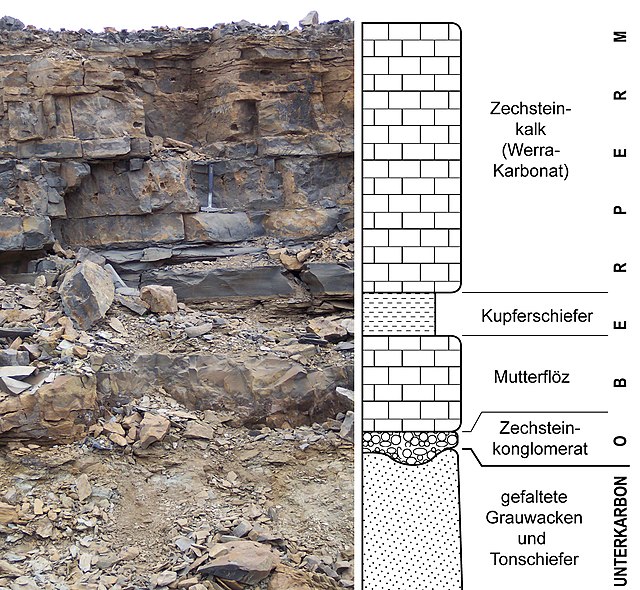The Kupferschiefer or Kupfermergel, is an extensive and remarkable sedimentary unit in Central Europe. The relatively monotonous succession is typically 30 to 60 centimetres and maximum 2 metres (6.6 ft) thick, but extends over an area of 600,000 square kilometres (230,000 sq mi) across the Southern Permian Basin. The Kupferschiefer can be found in outcrop or in the subsurface straddling six countries, including parts of the southern North Sea. The lateral equivalent outcropping in England is called Marl Slate.
Sample of shale with chalcopyrite vein from the Kupferschiefer
Extent of the Zechstein sea, where the Kupferschiefer was deposited
Stratigraphic succession including the Kupferschiefer in the Kamsdorf mine near Saalfeld, Thuringia
Miners extracting copper in Mansfeld
In the geologic timescale, the Wuchiapingian or Wujiapingian is an age or stage of the Permian. It is also the lower or earlier of two subdivisions of the Lopingian Epoch or Series. The Wuchiapingian spans the time between 259.51 and 254.14 million years ago (Ma). It was preceded by the Capitanian and followed by the Changhsingian.
Wuchiapingian aged stratigraphic succession including the Kupferschiefer, Kamsdorf mine near Saalfeld, Thuringia, Germany




